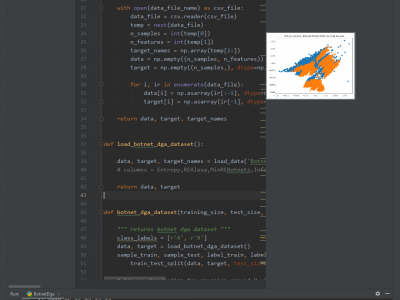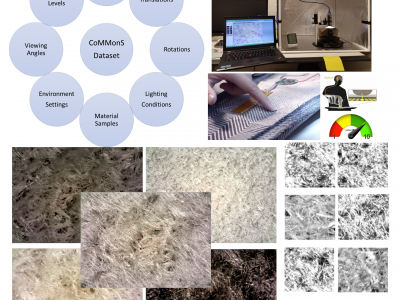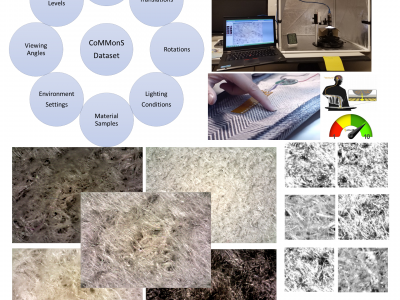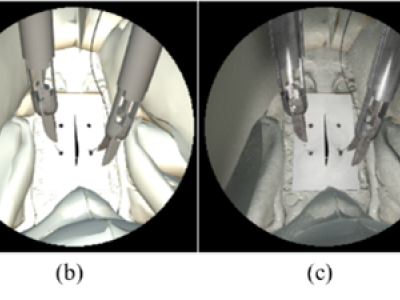Machine Learning
This is the dataset used in our journal paper, submitted to: IEEE Transactions on Dependable and Secure Computing, Special Issue on Explainable Artificial Intelligence for Cyber Threat Intelligence (XAI-CTI) Applications.
Submitted = 12-Jan-2021 (under review)
ID = TDSCSI-2021-01-0045
Source codes are available at IEEE Code Ocean:
Hatma Suryotrisongko (2020) Botnet DGA [Source Code]. https://doi.org/10.24433/CO.4005597.v2
- Categories:
 3203 Views
3203 Views
This is the raw MMG data.
- Categories:
 729 Views
729 ViewsThe aircraft fuel distribution system has two primary functions: storing fuel and distributing fuel to the engines. These functions are provided in refuelling and consumption phases, respectively. During refuelling, the fuel is first loaded in the Central Reservation Tank and then distributed to the Front and Rear Tanks. In the consumption phase, the two engines receive an adequate level of fuel from the appropriate tanks. For instance, the Port Engine (PE) will receive fuel from Front Tank and the Starboard Engine (SE) will receive fuel from Rear Tank.
- Categories:
 2296 Views
2296 Views
This is the data for paper "Environmental Context Prediction for Lower Limb Prostheses with Uncertainty Quantification" published on IEEE Transactions on Automation Science and Engineering, 2020. DOI: 10.1109/TASE.2020.2993399. For more details, please refer to https://research.ece.ncsu.edu/aros/paper-tase2020-lowerlimb.
- Categories:
 1179 Views
1179 ViewsAs one of the research directions at OLIVES Lab @ Georgia Tech, we focus on recognizing textures and materials in real-world images, which plays an important role in object recognition and scene understanding. Aiming at describing objects or scenes with more detailed information, we explore how to computationally characterize apparent or latent properties (e.g. surface smoothness) of materials, i.e., computational material characterization, which moves a step further beyond material recognition.
- Categories:
 945 Views
945 ViewsAs one of the research directions at OLIVES Lab @ Georgia Tech, we focus on recognizing textures and materials in real-world images, which plays an important role in object recognition and scene understanding. Aiming at describing objects or scenes with more detailed information, we explore how to computationally characterize apparent or latent properties (e.g. surface smoothness) of materials, i.e., computational material characterization, which moves a step further beyond material recognition.
- Categories:
 274 Views
274 ViewsThe dataset consists of the following columns:
Data description
ColumnDescriptiongift_idUnique ID of giftgift_typeType of gift (clothes/perfumes/etc.)gift_categoryCategory to which the gift belongs under that gift typegift_clusterType of industry the gift belongsinstock_dateDate of arrival of stockstock_update_dateDate on which the stock was updatedlsg_1 - lsg_6Anonymized variables related to giftuk_date1, uk_date2Buyer related datesis_discountedShows whether the discounted is applicable on the giftvolumesNumber of packages boughtpriceThe total price
- Categories:
 266 Views
266 ViewsThis dataset was used and described in detail in the following publication. The Effects of Different Levels of Realism on the Training of CNNs with only Synthetic Images for the Semantic Segmentation of Robotic Instruments in a Head Phantom. Heredia-Perez, S. A.; Marinho, M. M.; Harada, K.; and Mitsuishi, M. International Journal of Computer Assisted Radiology and Surgery (IJCARS). 2020. https://doi.org/10.1007/s11548-020-02185-0
- Categories:
 319 Views
319 ViewsThis dataset contains the trained model that accompanies the publication of the same name:
Anup Tuladhar*, Serena Schimert*, Deepthi Rajashekar, Helge C. Kniep, Jens Fiehler, Nils D. Forkert, "Automatic Segmentation of Stroke Lesions in Non-Contrast Computed Tomography Datasets With Convolutional Neural Networks," in IEEE Access, vol. 8, pp. 94871-94879, 2020, doi:10.1109/ACCESS.2020.2995632. *: Co-first authors
- Categories:
 3878 Views
3878 Views






